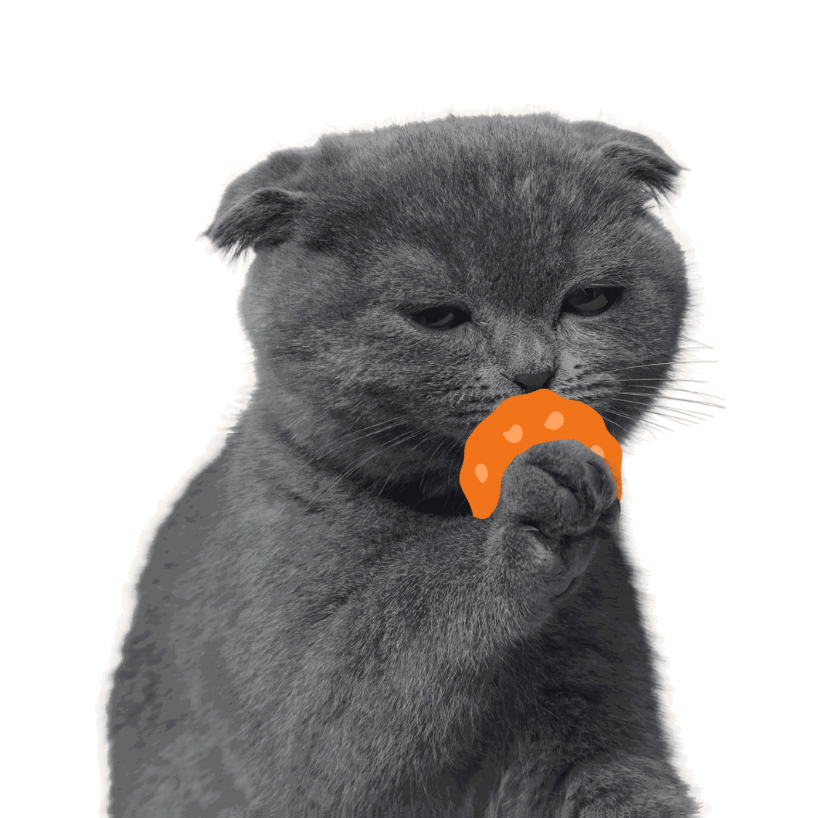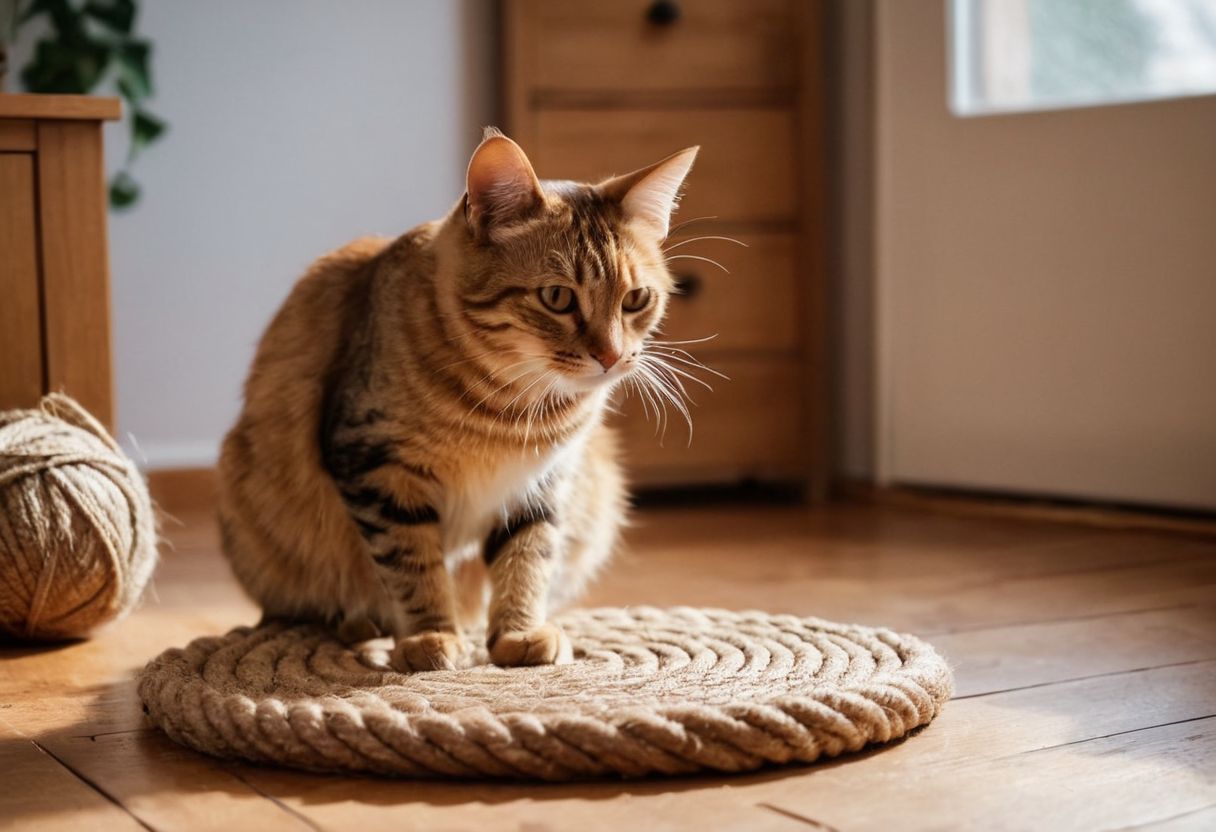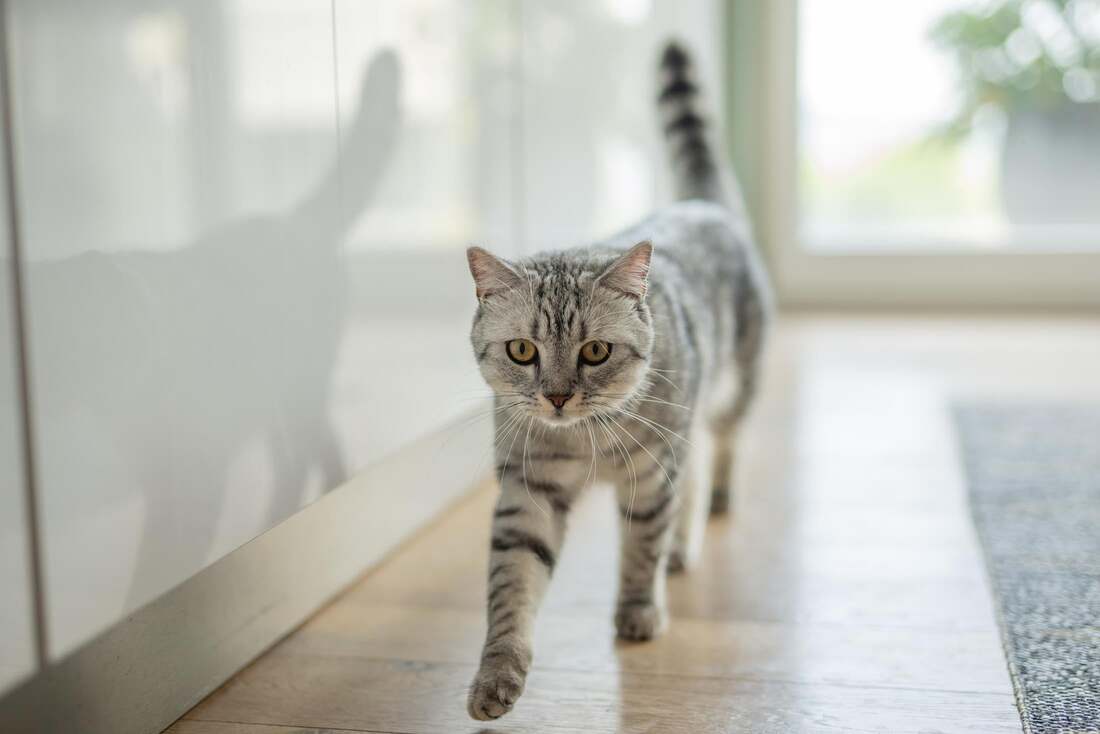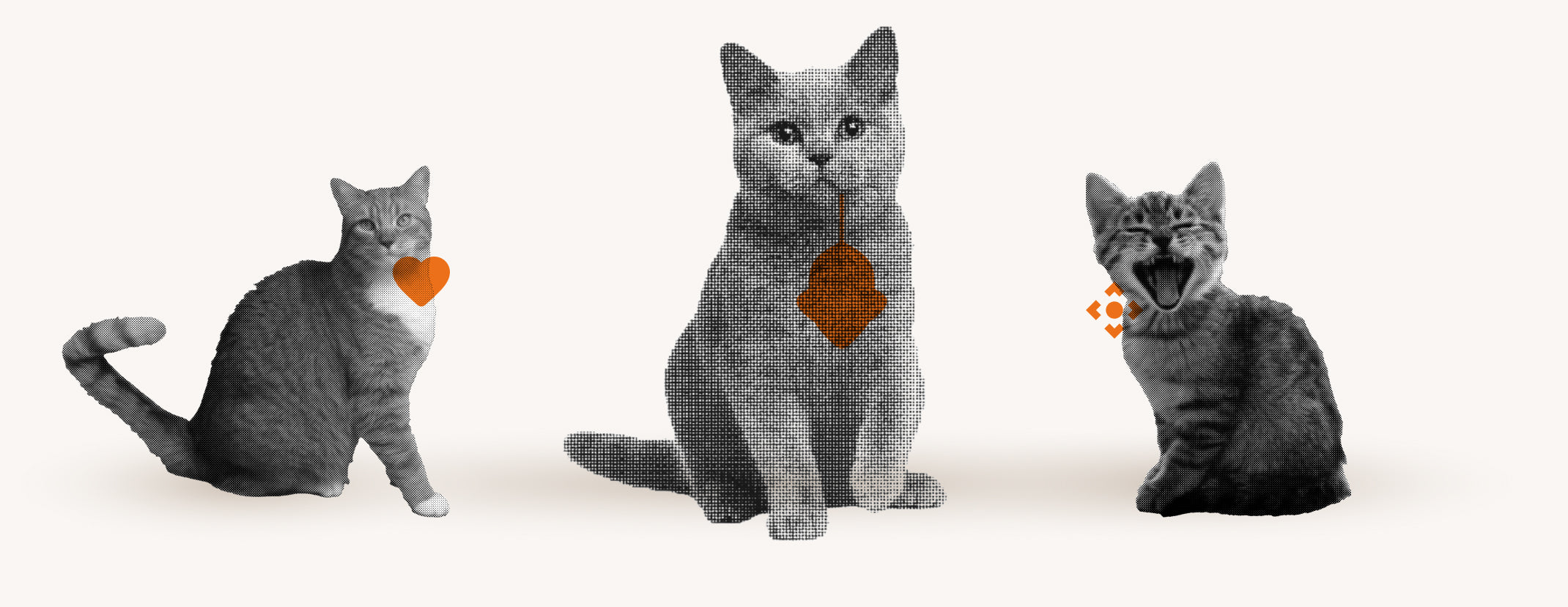Is your cat scratching your furniture again?
Every cat owner knows the problem when beloved furniture suffers from sharp claws.
With a few simple materials and a little creativity, you can make an exciting scratching toy for your cat.
In this blog post, we'll show you how to make your own sturdy, environmentally friendly cat toys using natural materials, simple instructions, and safety tips.
What materials do you need to make scratching toys?

If you want to make scratching toys for your cat yourself, choosing the right materials is crucial. Natural materials such as wood, sisal or cork are not only safe for your cat, but also environmentally friendly. These materials are robust and can withstand your cat's sharp claws. They are also biodegradable and have less impact on the environment than synthetic alternatives.
In addition to wood and sisal, you can also use recycled materials to make scratching toys. Old carpets or ropes that would otherwise end up in the trash are great for this. You can also use cardboard to make simple and inexpensive scratching boards. Remember that the materials should be safe and free of harmful substances so as not to endanger your cat's health.
Natural materials for sustainable cat toys
Various natural materials are ideal for sustainable cat toys. Wood, especially untreated or treated with natural oils, provides a sturdy base for many toys. For example, you can use a small tree trunk or thick branches to create scratching posts or play stations. Corks are also a great option as they are lightweight yet durable. They can be used as a throwing toy or integrated into other toys.
Other materials that are suitable for homemade cat toys are natural fibers such as sisal, jute or hemp. These materials are ideal for scratching mats or boards. Here are some ideas on how you can use these materials:
- Wrap sisal rope around an old block of wood to create a simple but effective scratching post.
- Use jute fabric to sew small bags that can be filled with catnip.
- Attach hemp cords to a piece of wood to make an interactive fishing rod.
Instructions for making your own cat toys
Making your own cat toys is not only a cost-effective alternative to store-bought toys, but also gives you the opportunity to encourage your cat's curiosity and natural instincts. In this section, we'll show you how to make simple but effective toys yourself that will give your cat hours of fun. From valerian pillows to interactive fishing rods and puzzle boards, you'll find the right toy for every cat here.
The beauty of making your own cat toys is that you can use materials you often already have at home. Old socks, feathers, string, or empty toilet paper rolls can be turned into exciting toys. Here are some materials you can use:
- Fabric scraps for pillows or small toys
- corks and cardboard for fidget boards
- Feathers or empty toilet paper rolls for fishing rods
Before you begin, make sure all materials are safe for your cat. Avoid sharp edges and small parts that could be swallowed. In the next step, we'll show you how to turn these materials into exciting toys that your cat will love. So, grab your scissors and glue, and let's get started!
How to make a valerian pillow for your cat

A valerian pillow is particularly attractive to cats, as the smell of valerian has an attractive effect on them. To make such a pillow, you will need sturdy fabric, about 1-2 teaspoons of dried valerian, a small bowl of rice, a needle and thread, and a pair of scissors.
Start by cutting the fabric into two equal pieces and sew three sides together to form a bag. First fill it with a layer of rice, sprinkle the valerian on top and cover it with another layer of rice. Then sew the open side shut. Make sure that the pillow is securely closed so that your four-legged friend cannot get to the contents and swallow them.
DIY fishing rod – step by step

A DIY fishing rod encourages your cat's hunting instincts and is easy to make. You'll need a sturdy wooden stick, some string, some wooden beads and a feather. Start by attaching the string to one end of the stick.
Then thread the wooden beads onto the string and attach the feather to the other end. The beads make an appealing sound when playing, which will further encourage your cat. Make sure all parts are tight and secure to ensure your cat's safety.
Construction instructions for a cat scratching board

A puzzle board is a great toy to train your cat's dexterity and intelligence. To build it, you will need a flat base made of wood or sturdy cardboard, various small containers or bowls, and treats or small toys.
Attach the containers to the board at different distances so that your cat has to use its paw to get to the treats. You can expand the board with different obstacles such as small balls or tubes to increase the level of difficulty. This will keep the game exciting and challenging for your cat.
Safety Tips for Making Cat Toys
When making cat toys, your cat's safety is paramount. Avoid using small, sharp, or easily swallowed items. Here are some specific materials and items to avoid:
- Sharp edges : Make sure all the pieces you use are smooth and free of sharp edges. Sand down any sharp corners or wrap them with fabric.
- Small parts : Small objects like beads, buttons or rubber bands can be easily swallowed and cause intestinal obstruction. Instead, use larger, sturdy parts that are less likely to be swallowed.
- Dangerous materials : Avoid using toxic materials or those that could be dangerous if swallowed, such as metal parts, synthetic threads or plastic sheets.
In addition to choosing safe materials, it is important to check toys regularly for wear and tear and damage. Remove worn toys immediately to prevent your cat from eating parts of them. Here are some other safety tips:
- Regular inspection : Check your cat's toys regularly for signs of wear or damage. Pay particular attention to loose parts that may have come loose.
- Supervision : Do not let your cat play unsupervised with toys that contain long strings or ribbons, as these can pose a strangulation hazard. Games with such toys should always take place under supervision.
- Size of the toy : Make sure the toy is large enough so that it cannot get stuck in your cat's throat. Avoid particularly small toys if you have a young or particularly small cat.
Discover the benefits of the Flappie cat flap
Imagine if you could avoid the mess and chaos that occurs when your cat brings home another mouse or bird. This is exactly where Flappie 's smart cat flap comes in. It is equipped with a camera and artificial intelligence that detects whether your cat comes home alone or with prey. If prey is detected, the flap stays closed. This means less cleaning for you and a more hygienic environment. The advantages of this technology are clear:
- No more unwanted guests brought into the house by your cat.
- Less cleaning effort and a cleaner apartment.
- More hygienic conditions in your home, without dead animals.
The Flappie app amplifies these benefits by allowing you to control the cat flap from anywhere. You will receive push notifications on your smartphone when your cat tries to come home with prey. In addition, you can adjust settings, watch videos of your cat and get statistics on their activities. This gives you a new level of control and insight into your cat's life. The Flappie app offers you:
- Remote control of the cat flap so you always have control.
- Notifications and real-time updates on your cat's activities.
- Access to videos and statistics to help you better understand your cat's behavior.
Frequently Asked Questions
How can you make your own cat toys?
To make your own cat toys, you need various materials such as wood, sisal, fabric scraps, corks or cardboard. For example, you can make a valerian pillow out of sturdy fabric and dried valerian or make a fishing rod out of a wooden stick, string and a feather. It is important that all materials are safe for your cat and do not contain any sharp edges or small, swallowable parts.
Which wood should cats use to scratch?
Untreated wood or wood treated with natural oils is suitable for scratching toys. You can use small tree trunks or thick branches to create sturdy scratching posts or play stations for your cat.
How to make cat toys at home?
You can make cat toys at home using natural materials and recycled items. For example, you can build a puzzle board out of a base plate, various containers and treats, or make toys out of old socks, feathers and empty toilet paper rolls. Make sure that all materials are safe and non-toxic.
What do cats like to play with the most?
Cats like toys that stimulate their curiosity and natural instincts. Popular toys include fishing rods that encourage hunting instincts, valerian pillows that are attractive due to their smell, and puzzle boards that train cats' dexterity and intelligence.





Share:
Cats chase each other – play or serious? A comprehensive guide
How old does your cat have to be to go outside? A guide.